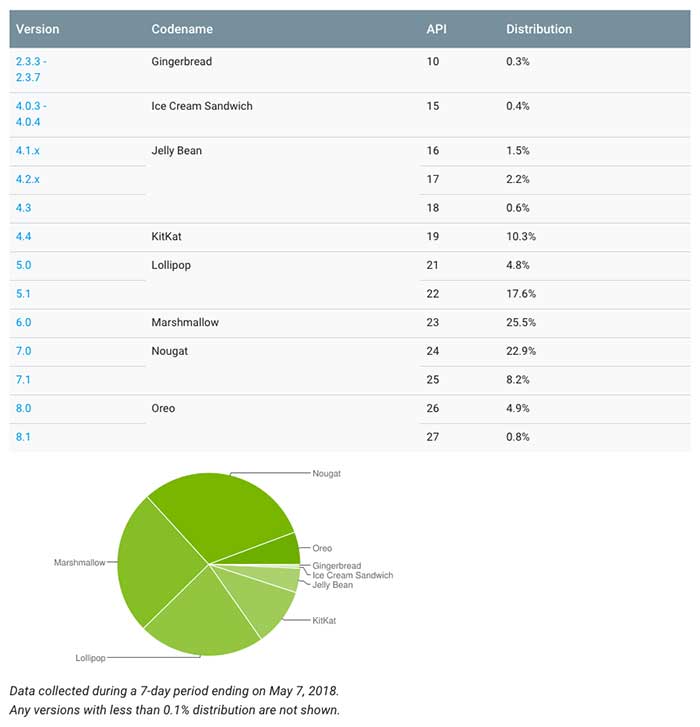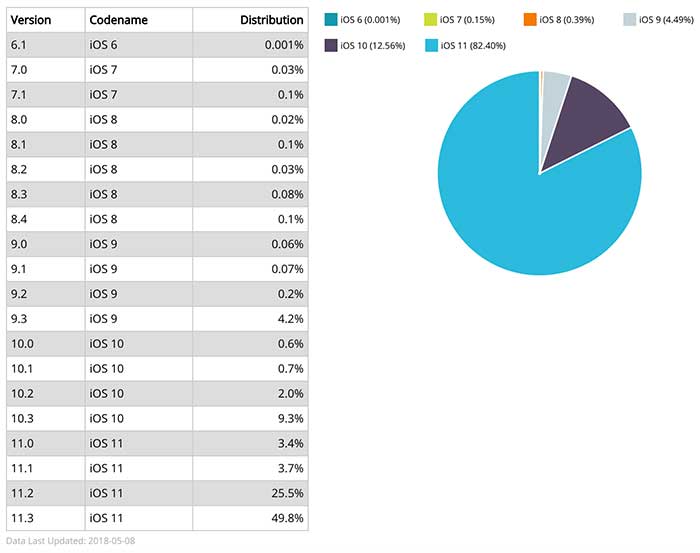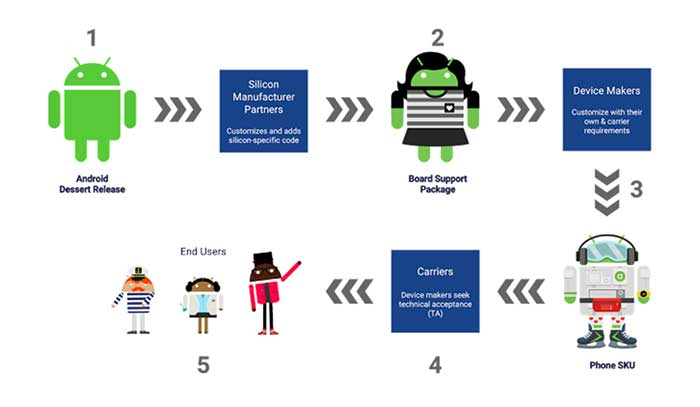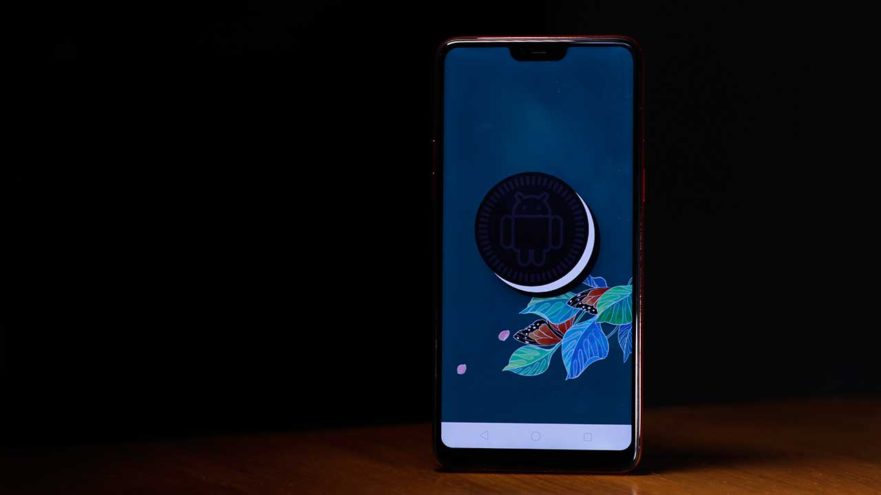Google I/O time always reminds us to check the state of Android. And for the past years, we have always been disappointed by what we find out. Is this year any different?
Unfortunately for Android users, the operating system is still as fragmented as ever. The platform-distribution numbers as of May 7, 2018, show that only 5.7 percent of devices are on the latest version of the OS, Oreo. This, for something that was released on August 21, 2017. We’re almost nine months in, and close to 95 percent of Android units have not tasted Oreo. Granted, many hardware can’t support it. But still.
SEE ALSO: How to enroll your non-Google phone in Android P Beta Program
Well, at least the most number of devices — 31.1 percent of them — are already running Nougat? On September 11, 2017, Nougat-based products made up 15.8 percent of the Android market. Eight months on, we’re talking about a 100-percent jump. Marshmallow, which in September had 32.2 percent adopters, is now down to 25.5 percent. Next to it is Lollipop, which has 22.4 percent.

The relative number of devices running a given version of the Android platform as of May 2018 (via Android Developers)
Actually, our real question is: Why are some people still on Gingerbread?! (⊙⊙)
By comparison, 82.4 percent of iOS devices are already on the latest version of the Apple OS, iOS 11.

iOS distribution as of May 8, 2018 (via Apteligent Data)
Of course, the Android fragmentation problem does not really fall squarely on Google’s shoulders. The onus is on the manufacturers to push out updates to their products. And don’t forget the carriers.

Life of an Android release (via Android Developers)
You have to understand that there are a lot of steps involved before you get the latest Android version. Google itself explained the process:
- The Android team publishes the open-source code for the latest release to the world.
- Silicon manufacturers, the companies that make the chips that power Android devices, modify the new release for their specific hardware.
- Silicon manufacturers pass the modified new release to device makers — the companies that design and manufacture Android devices. Device makers modify the new release again as needed for their devices.
- Device makers work with carriers to test and certify the new release.
- Device makers and carriers make the new release available to users.
Google’s solution to make the update process faster starting with Android Oreo — at least theoretically — is Project Treble, in which the OS framework and the low-level software have been separated. That way, the Android OS itself can be upgraded without having to touch the vendor implementation.
READ ALSO: The iPhone is 10 years old and still has a trick that others can’t replicate
The advantage can be seen now, as Project Treble-compatible models, along with Google’s Pixel smartphones, get to receive the Android P beta. It’s a start. Hopefully, things will indeed look up for Android soon enough.
Share this Post

